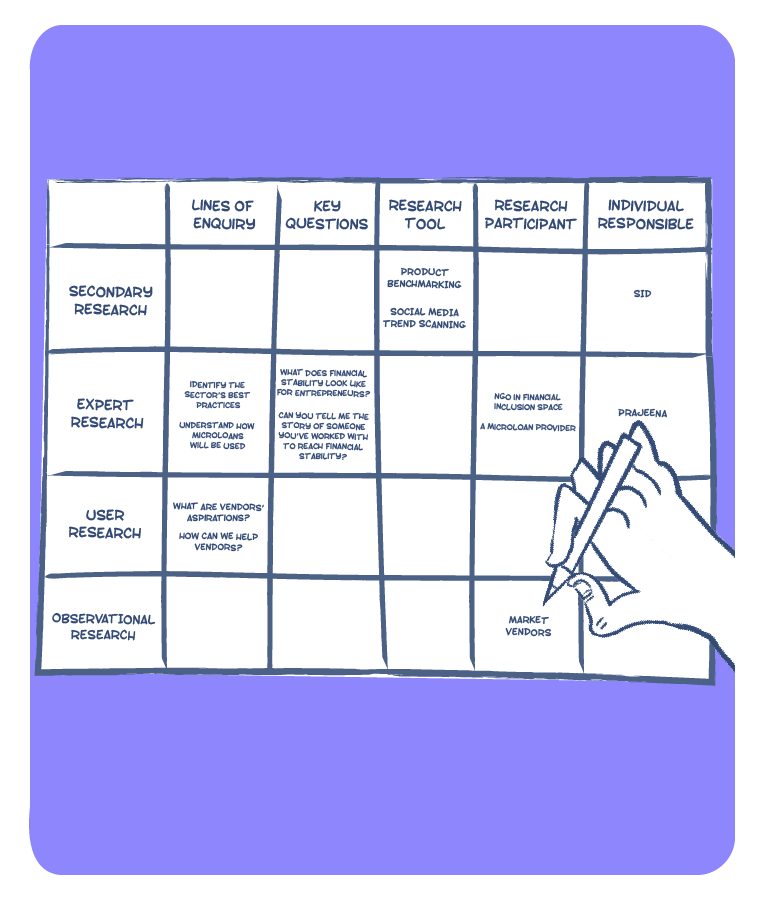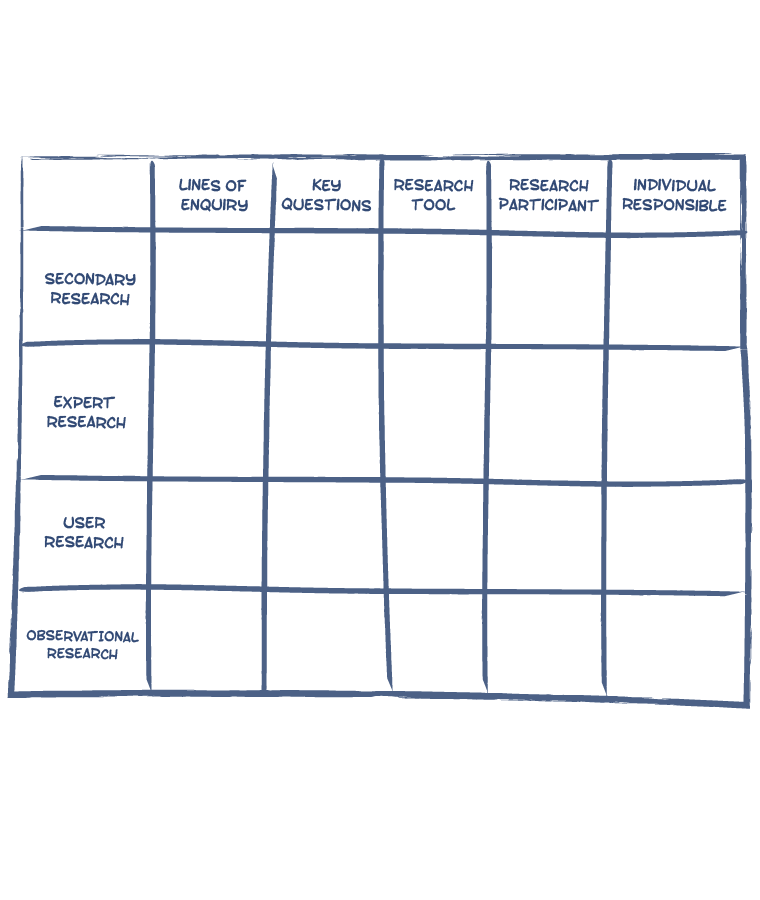HUMAN CENTERED DESIGN | DISCOVERY
Research Plan
90 Min
A well framed Research Plan makes sure teams are aligned on their key learning objectives, and the use of methods and tools. It helps teams map chosen methods along key lines of enquiry, identify research participants and locations, and distribute responsibilities within the team. The tool serves like a dashboard while doing research.
USE CASES
- Create a guiding plan for a research team.
- Use as dashboard to map progress against plan.
LIMITATIONS
A Research Plan is only as good as the discussion preceding it. It best serves as a dashboard, and has limited capacity to inform teams in terms of the kind of tools, participant profiles, lines of enquiry, etc. that ought to be used.

